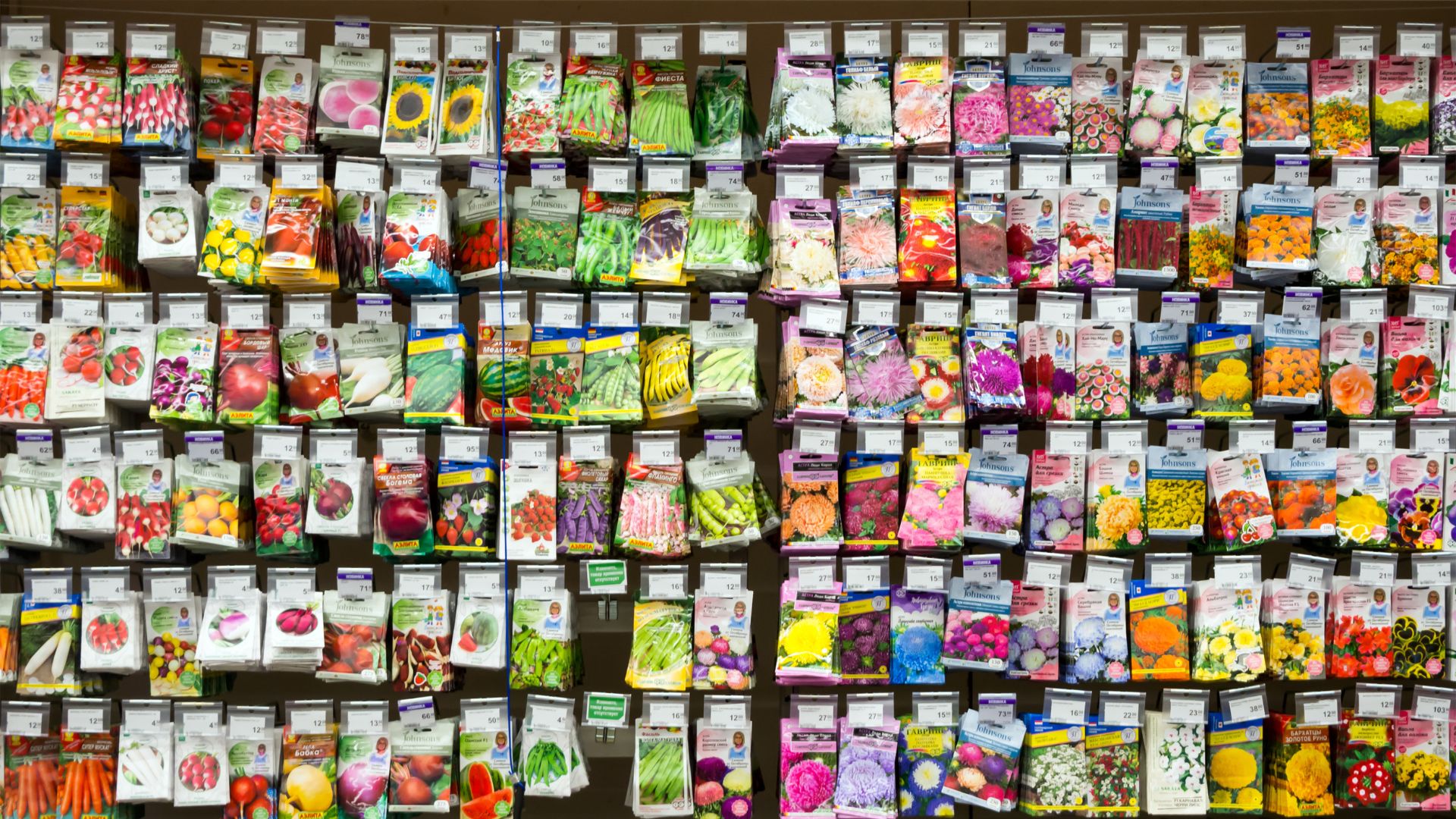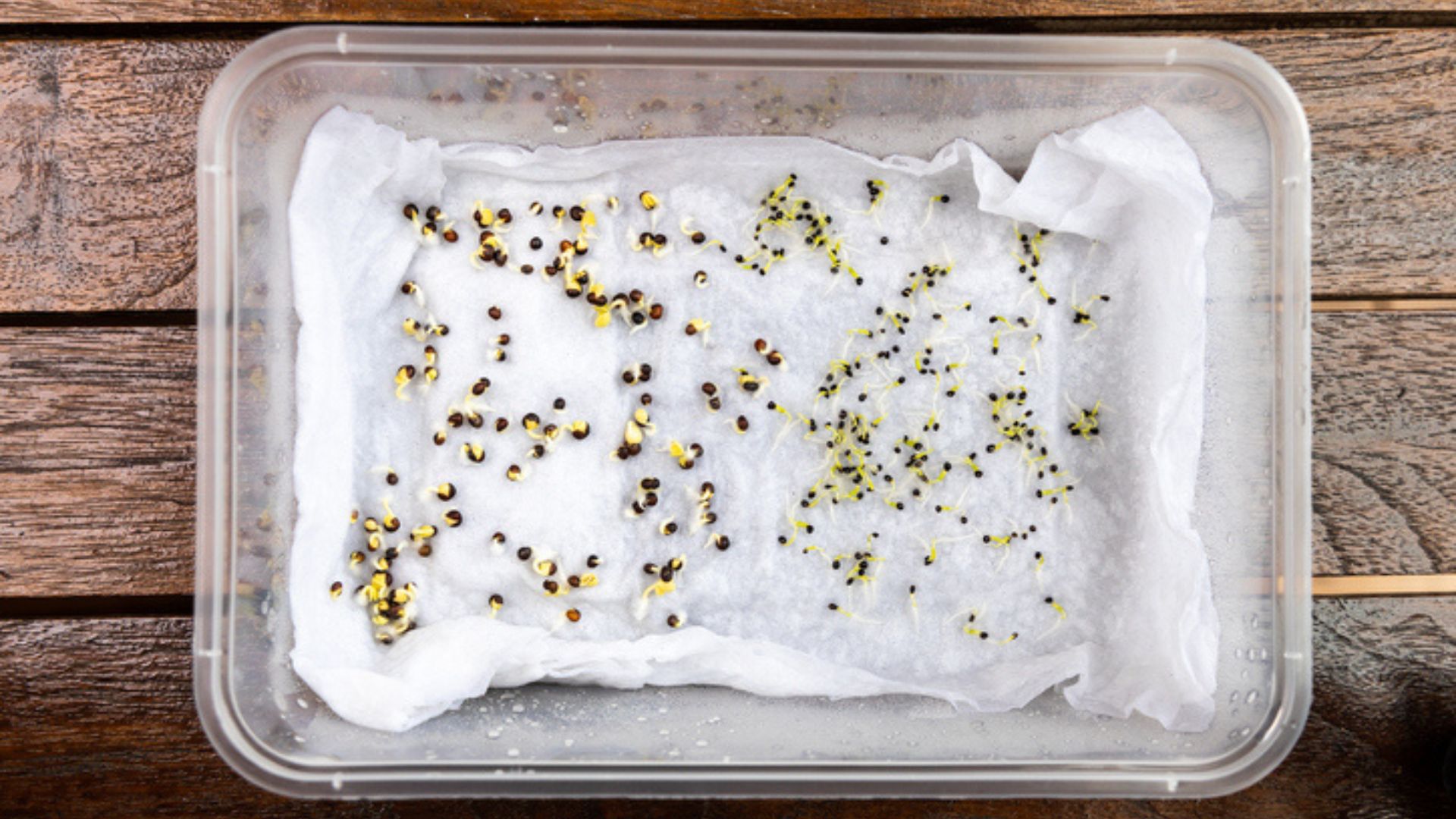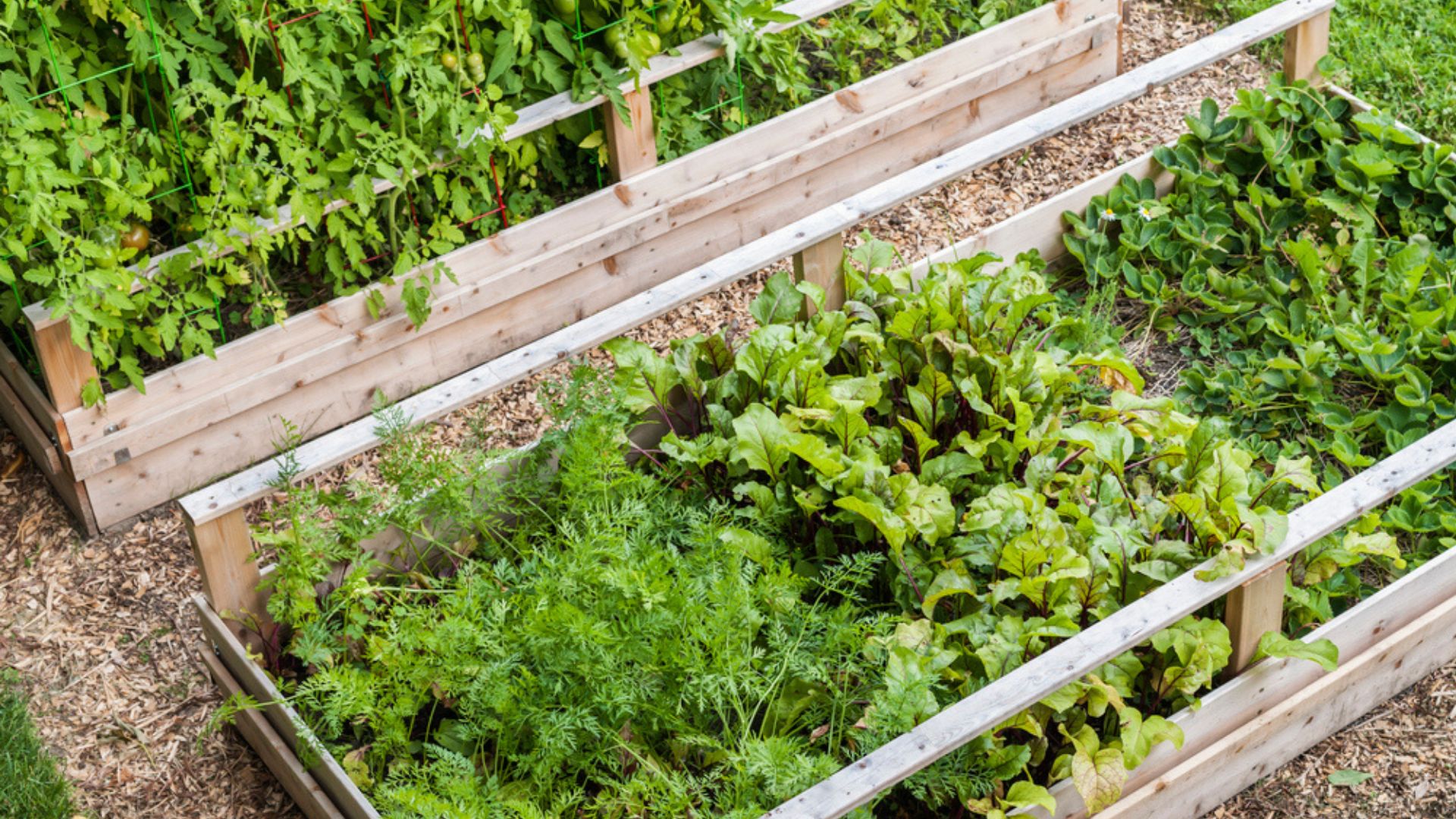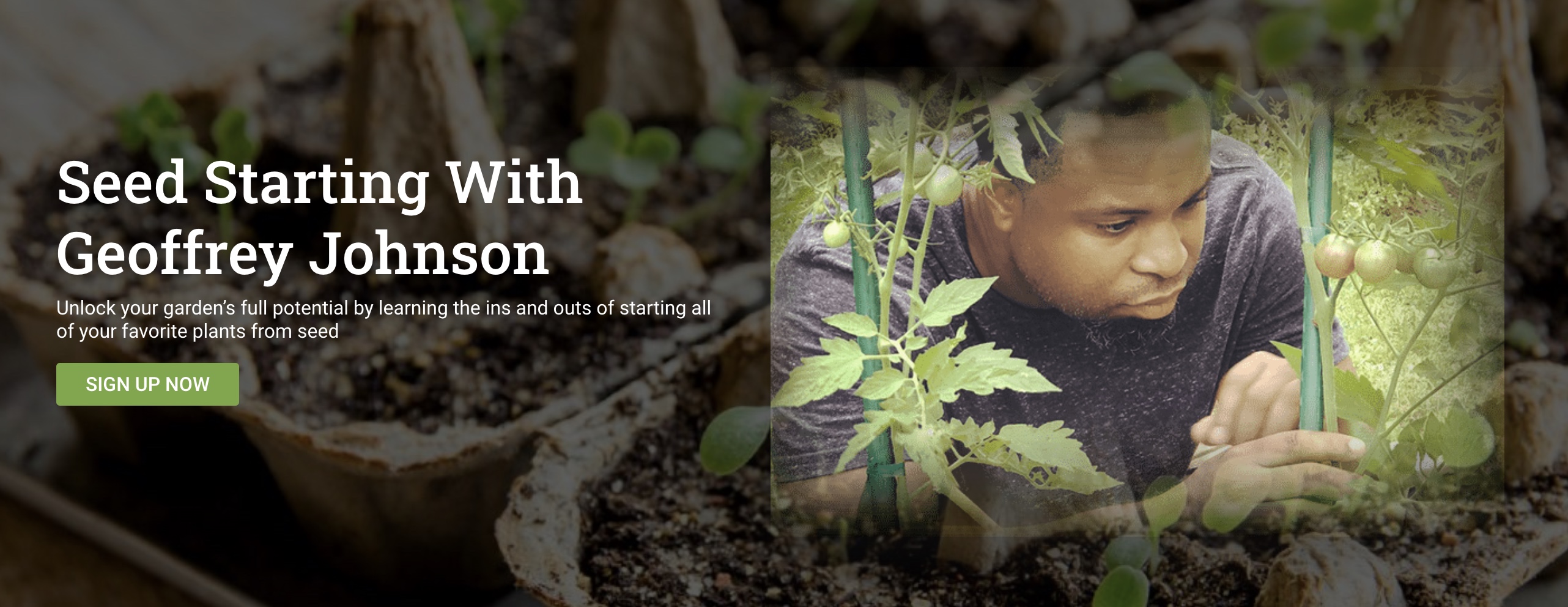How To Start Seeds Indoors In Warm Climates – Expert Tips For Southern Gardeners
Want to start seeds indoors? If you live in a warm climate you can get an extra early start. Let our resident seed starting expert take you through his process.

Starting seeds indoors can give you a big head start on your garden and if you live in the Southern U.S. or a similarly warm climate, you can get growing even earlier. Master Gardener, Georgia native, and seed starting pro Geoffrey Johnson will walk you through everything you need to know about how to start seeds indoors in warm climates.
Rules Of Gardening
Before we dive in, let's go over four basic rules of gardening. These will get you a better idea of what you've got in mind for your garden, and help you figure out how to get there.
1. Grow What You Love
If you don't love it, you won't eat it. And if you won't eat it, why take up space with it in your garden? You should focus on growing vegetables you know you like and will look forward to harvesting. You'll have a real treat to look forward to, and you'll feel a lot more invested along the way.
2. Don’t Wear White In The Garden
The garden's a dirty place - it is full of dirt, after all! Embrace the dirt and don't wear clothes you can't get a little messy.
3. Decide What Type of Garden You Want
This one is extra important in the South, where the growing season is so long. A spring garden is going to start very early in the year, and be made up of cool season crops (we'll cover that more below). A summer garden is going to be later in the year and feature all hot weather crops. Deciding which you want to grow will help dictate what you plant, and when you start your seeds. Some people only like to grow in the spring. Some people only like to grow in the summer. Some people do both, one right after the other. It's totally up to you.
4. Decide What Type of Seeds To Sow
Seeds aren't just seeds! Sure, they'll all grow, but there are different types out there, and you should know what you which types you want to grow.
Types of Seeds
Once you've followed the rules of gardening and established what kind of garden you want to grow, it's time to pick out your seeds.
Sign up for the Gardening Know How newsletter today and receive a free copy of our e-book "How to Grow Delicious Tomatoes".
Buying seeds can often be overwhelming due to the wide array of options available. You’ll want to know the difference between hybrid, heirloom, organic and GMO before you grow. Plus, each seed type comes with its own set of characteristics and instructions, making the decision-making process challenging, especially for new gardeners.

Let’s break down the four main types of seeds to choose from:
Heirloom Seeds
Heirloom seeds are unique varieties of plants that are naturally pollinated without human intervention. These are the old, tried and true varieties. Seeds harvested from heirloom plants are going to grow into the same variety as the parent plant.
Organic Seeds
Organic seeds are grown without pesticides, herbicides, or any chemical that's not listed as organic. These are a great choice for sustainable and environmentally friendly gardening.
Hybrid Seeds
Hybrid seeds come from two genetically different plants that are cross-pollinated. This is usually done to create better, stronger varieties of plants that may exhibit improved disease resistance or higher yield. Seeds saved from hybrid plants may not carry the desired traits of the parents. So if you're planning on saving seeds to plant next year, beware the hybrids!
GMO and Non-GMO Seeds
GMO (genetically modified) garden seeds are typically not available to home gardeners. GMO seeds are often patented and distributed to large-scale commercial growers under specific agreements and contracts. Due to concerns about the environmental and possible health impacts, access to GMO seeds is restricted, and their distribution is tightly controlled. However, as of spring 2023, the first ever GMO food crop has become available and directly marketed to home gardeners. Referred to as the Purple Tomato, this dark-skinned, cherry-sized tomato was developed by the breeder specifically to increase the levels of anthocyanins in the fruit. This new tomato has, per weight, now has as many antioxidants as a blueberry or eggplant. In the future, additional GMO crops may be marketed to home gardeners, and the choice to grow a modified crop is personal. Each gardener should weigh all factors and make an informed choice based on their own values.
Even seeds that you’ve stored for years should be given a chance in the garden. Attempting to grow old or expired seeds may often yield positive results. Plus you’ll potentially save money by utilizing resources you already have and gain valuable insights into seed germination and storage practices for the future.
Before throwing a handful of old seeds into the garden, first perform a seed viability test. By conducting one of these tests, gardeners can assess the likelihood of germination before investing the time and energy into planting them.

Cool Weather vs. Warm Weather Crops
Up above, we mentioned the two different types of gardens you can grow: spring gardens and summer gardens. In the South you can grow cool weather crops well into the spring, and hot weather crops well into the winter.
Each type of garden requires a distinct approach due to differing temperatures and growth requirements. For example, cool weather vegetables, such as lettuce, spinach and broccoli, thrive in the cooler temperatures of late winter and early spring and may struggle in the heat of Southern summers. In contrast, hot weather vegetables, such as tomatoes, peppers and okra are adapted to a warmer climate and require ample sunlight and heat to grow and flourish. These vegetables are typically planted in late spring or early summer, extending the growing season through late fall into early winter.
Gardeners should understand the distinct needs of both cool weather and hot weather vegetables to both plan their space and adjust their planting schedules to optimize the success of their crops.
Cool Weather Crops
In Southern regions, cool weather crops can thrive well into the spring season. However, as temperatures rise, they eventually succumb to the heat, leading to their decline and eventual demise.
By taking advantage of milder temperatures in late winter and early spring, a Southern gardener could plant a variety of lettuces, root crops and cruciferous vegetables that will thrive in the cooler weather. These cool crops typically prefer temperatures ranging from 45 to 75 degrees Fahrenheit and are best planted to avoid the scorching heat.
Here are some excellent cool weather crops:
- Broccoli
- Cauliflower
- Cabbage
- Brussels sprouts
- Leaf lettuce
- Swiss chard
- Collard greens
- Kale
- Beets
- Garlic
- Potatoes
- Peas
- Turnips
Warm Weather Crops
Warm weather crops can survive the intense heat of a Southern summer, and will usually continue to grow well into the winter. However, hot weather vegetables often require more frequent watering and mulching to retain moisture in the soil during the intense heat of Southern summers.
Vegetables such as tomatoes, peppers, eggplants, and okra require warm soil temperatures, typically above 60 degrees Fahrenheit, and ample sunlight to grow and produce a bountiful harvest. Gardeners in the South can take advantage of this extended growing season by planting these vegetables in late spring or early summer, allowing them to grow and mature well into fall.
Another option would be to stagger planting to ensure a continuous supply of fresh produce throughout the growing season. This is often referred to as succession planting. By sowing seeds or transplanting seedlings at different intervals, gardeners can minimize a surplus of vegetables maturing all at once, which can overwhelm both the garden and the gardener. Staggered plantings helps to ensure a more manageable harvest over time, reducing waste and optimizing resources such as water and nutrients.
Here are a few excellent warm weather crops:
Seeds for warm weather crops should be started indoors 6-8 weeks before the last frost date.
Companion Planting
Companion planting in a warm climate vegetable garden is also recommended. Between the long, hot days, blazing sun and frequent watering, any respite from the garden would be welcomed. By strategically pairing compatible species, the garden may take care of pests, disease and soil fertility all on its own.
For example, planting aromatic herbs such as basil or dill alongside tomatoes can help repel pests such as aphids and hornworms. Additionally, tall plants such as sunflowers or sweet corn can provide not only shade but a support structure for tall vining crops such as cucumbers or beans, helping to optimize space in the garden. Legumes such as beans or peas will also improve soil fertility for nitrogen-hungry crops such as sweet corn and squash, reducing the need for synthetic fertilizers.

How to Start Seeds Indoors in a Warm Climate
For a head start on the growing season, start seeds indoors. In warm regions, temperatures can quickly soar and summers are often long and hot, so starting seeds indoors in warm climates can not only give you a head start, but provide your plants with a better chance to mature and produce before the intense heat of summer sets in.
Additionally, gardeners will be able to select and cultivate a wider variety of crops often only available by seed. From colorful heirloom tomatoes to specialty vegetables, you can create a more unique garden than your neighbor down the street.
This early start also helps gardeners better manage their time and resources, allowing them more time to plan and prepare garden beds.
Here are the ten easy steps to start seeds indoors in warm climates:
- Source a well-drained potting mix. The soil should be lightweight and could include ingredients such as perlite, vermiculite, and sphagnum peat moss. Do not use regular garden soil or topsoil as it is too dense and may contain weed seeds, pests and pathogens harmful to delicate seedlings.
- Pre-moisten the soil in a bucket or small tray.
- Fill pots with moistened soil to the top. Paper egg cartons also make terrific seed starting vessels.
- Place 1 to 3 seeds in a hole in each pot or cell, depending on species and directions stated on the seed packet.
- Cover seeds with soil and press gently.
- Moisten the soil with a spray bottle until the soil is wet to the touch.
- Place your container on a sunny, south-facing windowsill and await new growth.
- Don’t disturb them, and keep them clear of air conditioners and heat vents.
- Water frequently using a spray bottle, keeping the soil moist but not soggy.
- Give the container a quarter turn every few days to provide even exposure to all seedlings.
With a bit of planning, and attention to detail, Southern gardeners can unlock the full potential of their garden and cultivate a bountiful harvest to enjoy for months on end.
Sign Up For Our Free Seed Starting Workshop
Want more info on starting from seed? Head to the Gardening Know How Learning Channel today and sign for our free workshop, Seed Starting Workshop.
This 4-part, video based workshop will walk you through the basics of starting from seed. In addition to learning the best practices for seed starting, you'll also discover:
- How to save money by starting your favorite vegetables from seed.
- How to introduce variety into your vegetable garden.
- The Tips and tricks to seed starting success
- and so much more...

Love growing your own vegetables? Well, you're in luck! Our latest book, The Complete Guide to Vegetable Gardening, is available now!
Perfect for the gardener in your life, or for your own coffee table, this book boasts 224 pages of high-quality pictures, expert tips, and easy-to-follow advice to get your vegetable garden growing its best. Look for it at these sellers, and wherever quality books are sold.

Geoffrey Johnson is a 2020 Gardening Know How Community Garden Sponsorship recipient and Georgia Master Gardener with a passion for urban gardening. In addition to speaking engagements and teaching gardening skills across the country, he is the owner/operator of Depend on Planet Earth, also known as DOPE.